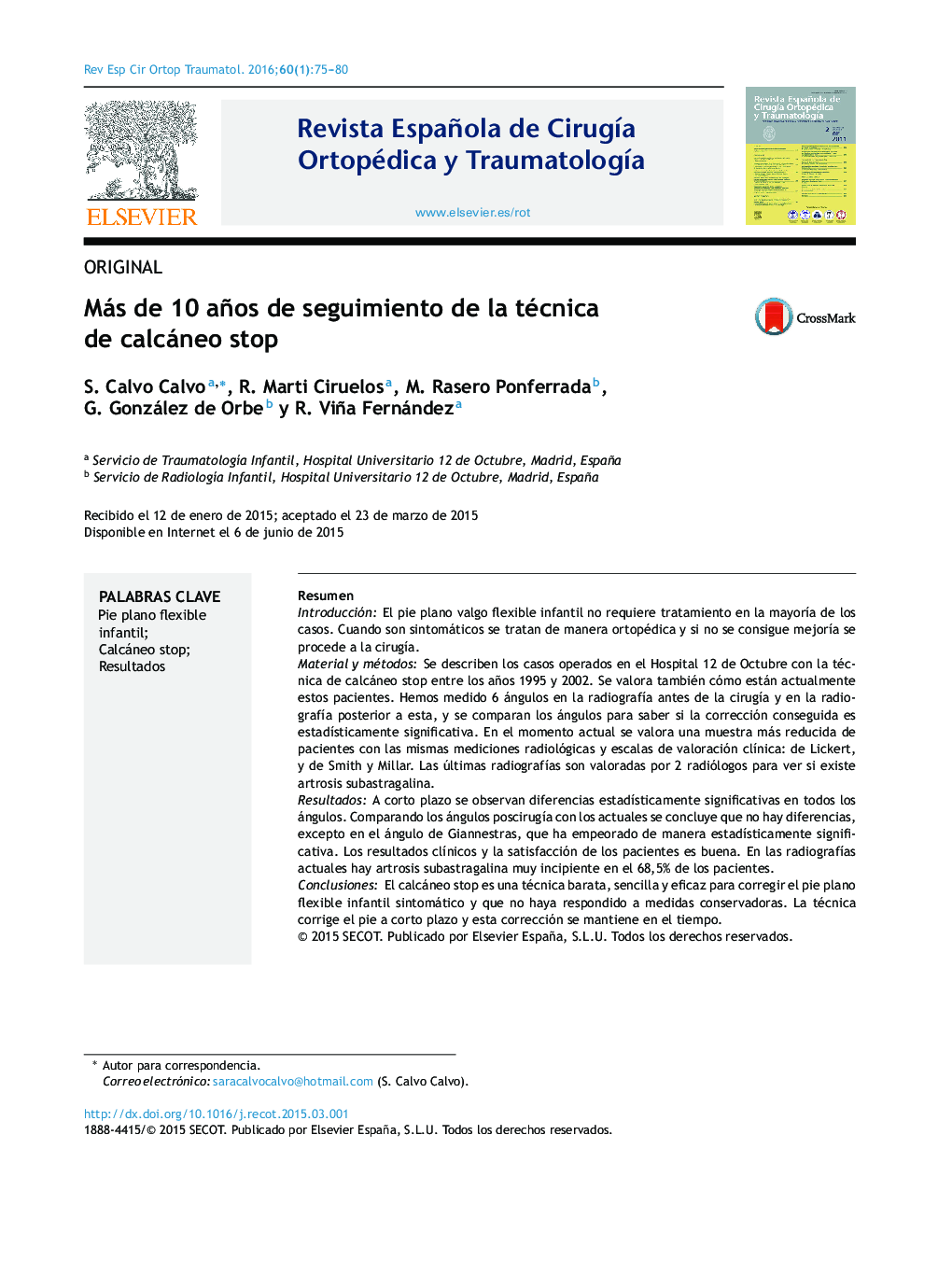| Article ID | Journal | Published Year | Pages | File Type |
|---|---|---|---|---|
| 4086273 | Revista Española de Cirugía Ortopédica y Traumatología | 2016 | 6 Pages |
ResumenIntroducciónEl pie plano valgo flexible infantil no requiere tratamiento en la mayoría de los casos. Cuando son sintomáticos se tratan de manera ortopédica y si no se consigue mejoría se procede a la cirugía.Material y métodosSe describen los casos operados en el Hospital 12 de Octubre con la técnica de calcáneo stop entre los años 1995 y 2002. Se valora también cómo están actualmente estos pacientes. Hemos medido 6 ángulos en la radiografía antes de la cirugía y en la radiografía posterior a esta, y se comparan los ángulos para saber si la corrección conseguida es estadísticamente significativa. En el momento actual se valora una muestra más reducida de pacientes con las mismas mediciones radiológicas y escalas de valoración clínica: de Lickert, y de Smith y Millar. Las últimas radiografías son valoradas por 2 radiólogos para ver si existe artrosis subastragalina.ResultadosA corto plazo se observan diferencias estadísticamente significativas en todos los ángulos. Comparando los ángulos poscirugía con los actuales se concluye que no hay diferencias, excepto en el ángulo de Giannestras, que ha empeorado de manera estadísticamente significativa. Los resultados clínicos y la satisfacción de los pacientes es buena. En las radiografías actuales hay artrosis subastragalina muy incipiente en el 68,5% de los pacientes.ConclusionesEl calcáneo stop es una técnica barata, sencilla y eficaz para corregir el pie plano flexible infantil sintomático y que no haya respondido a medidas conservadoras. La técnica corrige el pie a corto plazo y esta corrección se mantiene en el tiempo.
IntroductionInfantile flexible flatfoot does not require treatment in most cases. Symptomatic flexible flat feet are treated orthopaedically and surgery is only indicated when orthosis fails.Material and methodsCases who underwent surgical treatment with the stop screw technique at the 12 de Octubre Hospital between 1995 and 2002 are reported. Patient progress is also analysed. Six angles are measured on the x-ray prior to surgery and those same x-ray angles are measured again before material extraction. They are then compared to see if the correction achieved is statistically significant. A more reduced sample is currently being assessed with the same radiological measurements and two clinical assessment scales: Lickert, and Smith and Millar. The latest x-rays are analysed by two radiologists to determine if there is subtalar arthrosis.ResultsIn the short term, statistically significant differences are observed in all angles. The comparison between the post-surgery angles and the current angles does not show differences, except for the Giannestras angle, which has statistically significantly worsened. Clinical results and patient satisfaction is good. Incipient subtalar arthrosis is present in 68.5% of current patient x-rays.ConclusionsStop screw method is a cheap, simple and effective technique to correct symptomatic flexible flatfoot that has not improved with conservative treatment. This technique provides short-term foot correction which can be maintained over time.
